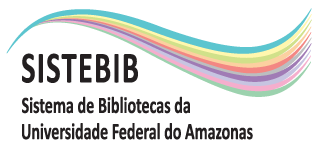| ???jsp.display-item.social.title??? |


|
Please use this identifier to cite or link to this item:
https://tede.ufam.edu.br/handle/tede/11323Full metadata record
| DC Field | Value | Language |
|---|---|---|
| dc.creator | Santos, Suiane Saraiva dos | - |
| dc.creator.Lattes | http://lattes.cnpq.br/3245070863841135 | eng |
| dc.contributor.advisor1 | Veiga Junior, Valdir Florencio | - |
| dc.contributor.advisor1Lattes | http://lattes.cnpq.br/3245070863841135 | eng |
| dc.contributor.advisor-co1 | Sampaio, Paulo de Tarso Barbosa | - |
| dc.contributor.advisor-co1Lattes | http://lattes.cnpq.br/0517307169401972 | eng |
| dc.contributor.referee2 | Oliveira, Luiz Antonio de | - |
| dc.contributor.referee3 | Carvalho, Rosany Piccolotto | - |
| dc.date.issued | 2024-12-19 | - |
| dc.identifier.citation | SANTOS, Suiane Saraiva dos. Estudos da atividade antifúngica dos óleos essenciais e hidrolatos de resinas de Protium altsonii no controle de fitopatógenos. 2024. 72 f. Dissertação (Mestrado em Biotecnologia) - Universidade Federal do Amazonas, Manaus (AM), 2024. | eng |
| dc.identifier.uri | https://tede.ufam.edu.br/handle/tede/11323 | - |
| dc.description.resumo | O uso de fungicidas no controle de fungos fitopatogênicos é considerado um grande desafio para a agricultura mundial, pois o uso desses produtos está associado a diversos problemas ambientais e danos à saúde humana. Nesse contexto, os óleos essenciais vegetais são uma alternativa em substituição aos pesticidas sintéticos usados na produção agrícola. As oleorresinas da espécie Protium altsonii possuem atividades biológicas promissoras e representam uma alternativa sustentável para o desenvolvimento de biopesticidas eficientes para o controle de fitopatógenos. Este estudo teve como objetivo avaliar o potencial antifúngico de oleorresinas de Protium altsonii, seus óleos essenciais e hidrolatos no controle de fungos patogênicos. Foram avaliados os fungos Alternaria japonica, Colletotrichum guaranicola, Colletotrichum spp. e Pestalotiopsis spp. As amostras de oleorresinas de P. altsonii (28g e 33g) foram submetidas à hidrodestilação em Clevenger por 3 horas. Os óleos essenciais e hidrolatos foram coletados e mantidos sob refrigeração. Os óleos essenciais obtidos foram submetidos à análise por cromatografia em fase gasosa (CG-EM) para quantificação da composição química. A determinação da atividade antifúngica foi realizada pelo método de difusão disco. A determinação da concentração mínima inibitória (CMI) e concentração fungicida mínima (CFM) foram realizadas pelo método de microdiluição em poços e em placas de Petri contendo caldo batata dextrose estéril, respectivamente. As análises de CG-EM possibilitaram a identificação de 34 constituintes para a amostra BRALT01, com predominância de monoterpenos (73,22%) e sesquiterpenos (24,41%). Os constituintes majoritários foram p-cimeno (34,73%), α-felandreno (13,86%), α-pineno (6,85%) e β-acoradieno (9,62%). Na amostra BRALT02, foram identificados 25 constituintes, com predominância de monoterpenos (90,21%) e sesquiterpenos (8,45%). Os componentes majoritários foram p-cimeno (51,6%), trans-dihidro-α-terpineol (15,1%), α-pineno (6,92%), α-terpineno (3,77%) e α-felandreno (3,34%). Os óleos essenciais BRALT01 e BRALT02 apresentam atividade antifúngica para os fungos Alternaria japonica, Colletotrichum guaranicola, Colletotrichum spp. com com formação de halos de inibição acima de 1,0 cm. O óleo BRALT02 apresentou melhores resultados para atividade antifúngica (halos de inibição entre 1,70 cm-1,95 cm) em comparação ao óleo BRALT01 (halos de inibição entre 1,19-1,45cm), para A. japonica, C. guaranicola e Colletotrichum spp. Os óleos não apresentaram atividade antifúngica para Pestalotiopsis spp. Os hidrolatos não apresentaram atividade antifúngica para nenhum fitopatógeno testado. O óleo BRALT02 foi mais eficiente do que o óleo BRALT01 apresentando os menores valores de CIM e CFM para todos os patógenos testados. Os óleos essenciais de resina de Protium altsonii são uma alternativa promissora para o controle de fitopatógenos, representando menor risco à saúde humana e ao meio ambiente. | eng |
| dc.description.abstract | The use of fungicides to control phytopathogenic fungi is considered a major challenge for global agriculture, since the use of these products is associated with several environmental problems and harm to human health. In this context, vegetable essential oils are a promising alternative to synthetic pesticides used in agricultural production. Oleoresins from the species Protium altsonii have biological activities and represent a sustainable alternative for the development of efficient biopesticides for the control of phytopathogens. This study aimed to evaluate the antifungal potential of Protium altsonii oleoresins, its essential oils and hydrolates in the control of pathogenic fungi. The fungi Alternaria japonica, Colletotrichum guaranicola, Colletotrichum spp. and Pestalotiopsis spp. were evaluated. The oleoresin samples from P. altsonii (28 g and 33 g) were subjected to hydrodistillation in Clevenger for 3 hours. The essential oils and hydrolates were collected and kept under refrigeration. The obtained essential oils were subjected to gas chromatography (GC-MS) analysis to quantify their chemical composition. The determination of antifungal activity was performed by the disk diffusion method. The determination of the minimum inhibitory concentration (MIC) and minimum fungicidal concentration (MFC) were performed by the microdilution method in wells and in Petri dishes containing sterile potato dextrose broth, respectively. The GC-MS analyses allowed the identification of 34 constituents for the BRALT01 sample, with a predominance of monoterpenes (73.22%) and sesquiterpenes (24.41%). The major constituents were p-cymene (34.73%), α-phellandrene (13.86%), α-pinene (6.85%) and β-acoradiene (9.62%). In sample BRALT02, 25 constituents were identified, with a predominance of monoterpenes (90.21%) and sesquiterpenes (8.45%). The major components were p-cymene (51.6%), trans-dihydro-α-terpineol (15.1%), α-pinene (6.92%), α-terpinene (3.77%) and α-phellandrene (3.34%). The essential oils BRALT01 and BRALT02 showed antifungal activity against the fungi Alternaria japonica, Colletotrichum guaranicola, Colletotrichum spp. with the formation of inhibition halos above 1.0 cm. The BRALT02 oil showed better results for antifungal activity (inhibition zones between 1.70 cm-1.95 cm) compared to the BRALT01 oil (inhibition zones between 1.19-1.45 cm) for A. japonica, C. guaranicola and Colletotrichum spp. The oils did not show antifungal activity for Pestalotiopsis spp. The hydrolates did not show antifungal activity for any phytopathogen tested. The BRALT02 oil was more efficient than the BRALT01 oil, presenting the lowest MIC and CFM values for all pathogens tested. Protium altsonii resin essential oils are a promising alternative for the control of phytopathogens, representing a lower risk to human health and the environment | eng |
| dc.description.sponsorship | CNPq - Conselho Nacional de Desenvolvimento Científico e Tecnológico | eng |
| dc.format | application/pdf | * |
| dc.language | por | eng |
| dc.publisher | Universidade Federal do Amazonas | eng |
| dc.publisher.department | Instituto de Ciências Biológicas | eng |
| dc.publisher.country | Brasil | eng |
| dc.publisher.initials | UFAM | eng |
| dc.publisher.program | Programa de Pós-Graduação em Biotecnologia | eng |
| dc.rights | Acesso Aberto | - |
| dc.rights.uri | https://creativecommons.org/licenses/by-nc-nd/4.0/ | pt_BR |
| dc.subject | Fungicidas | por |
| dc.subject | Agricultura sustentável | por |
| dc.subject | Fitopatologia | por |
| dc.subject.cnpq | CIENCIAS BIOLOGICAS | eng |
| dc.title | Estudos da atividade antifúngica dos óleos essenciais e hidrolatos de resinas de Protium altsonii no controle de fitopatógenos | eng |
| dc.title.alternative | Studies of the antifungal activity of essential oils and hydrosols of Protium altsonii resins in the control of phytopathogens. | eng |
| dc.type | Dissertação | eng |
| dc.subject.user | Biopesticidas | por |
| dc.subject.user | Propriedades biológicas | por |
| dc.subject.user | Controle alternativo | por |
| dc.subject.user | Amazônia | por |
| Appears in Collections: | Mestrado em Biotecnologia | |
Files in This Item:
| File | Description | Size | Format | |
|---|---|---|---|---|
| DISS_SuianeSantos_PPGBIOTEC | 1.62 MB | Adobe PDF | Download/Open Preview |
Items in DSpace are protected by copyright, with all rights reserved, unless otherwise indicated.




